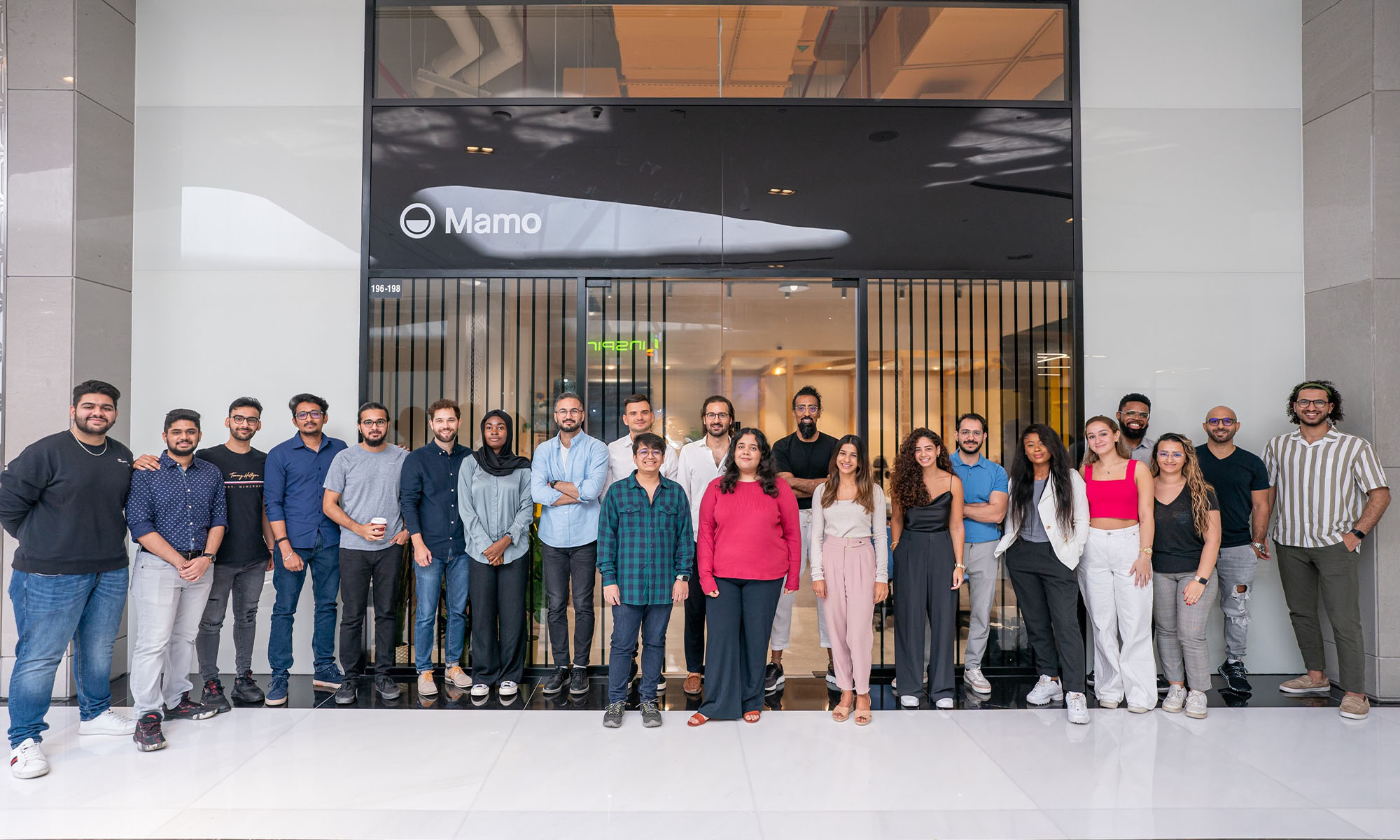News
Hybrid Cloud As A Driver Of Digital Transformation In Saudi Arabia
We interviewed 5 experts from some of the most prominent tech companies in the Middle East, and here’s what they had to say.

The Kingdom of Saudi Arabia is undergoing a large-scale digital transformation as part of the Saudi Vision 2030 strategic framework, whose overarching goal is to enable citizens and businesses to unleash their fullest potential.
One key enabler of the Kingdom’s impressive digital transformation is hybrid cloud, a cloud computing model that combines public clouds, on-premises computing, and private clouds to create a single IT infrastructure that maximizes flexibility and security while minimizing costs and overhead.
We had the opportunity to talk about the role of hybrid cloud in the digital transformation of Saudi Arabia with experts from some of the most prominent tech companies in the Middle East:

- Amr AlMasri, Regional Sales Director, Middle East at Genesys
- Ehab Kanary, VP Sales, EMEA Emerging Markets at CommScope
- Emad Fahmy, Systems Engineering Manager Middle East at NETSCOUT
- Ephrem Tesfai, Sales Engineering Manager META at Genetec
- Rodrigo Castelo, Vice President Middle East & Africa at OutSystems
Here’s what they had to say:
How Would You Rate Saudi Arabia’s Efforts To Achieve Digital Transformation?
Amr AlMasri (Genesys): Saudi Arabia has made significant strides in its digital transformation journey, which is now renowned for its technological abilities. This is seen through recent developmental projects such as The Line and other smart city initiatives. Additionally, it has improved digital services by partnering with the private sector to provide fiber-optic network coverage to more than 3.5 million homes across the Kingdom, doubling internet traffic through the Saudi Arabian Internet Exchange. As a result of Vision 2030’s extensive support for digital transformation, the G20 dubbed the Kingdom the “Top Digital Riser.” Therefore, it’s safe to say that Saudi Arabia is pioneering the region’s digital transformation drive.
Ehab Kanary (CommScope): With a digital transformation plan in place, Saudi Arabia is fast evolving into a digital hub. For a digital transformation to be successful, enabling digital inclusion is key. Today, Saudi Arabia’s internet penetration rate stood at 99 percent, which is one of the world’s highest internet penetration rates, alongside Denmark and Ireland. However, a national foundation of dependable and broadband connectivity that can be deployed at scale and universally accessible to everyone will be critical to enable the Vision 2030 of the Kingdom of Saudi Arabia.
Emad Fahmy (NETSCOUT): The Kingdom of Saudi Arabia has launched an impressive digital overhaul across the ecosystem’s many sectors to support and enable the country’s rapid technology adoption drive, and visionary governmental and institutional development plans. This initiative has been integrated into KSA’s Vision 2030 reform plan, highlighting Digital transformation as a top priority. The Kingdom’s government spear-headed these strategies by replacing traditional processes with digital ones and by developing an extensive five-year plan, designed to improve the quality and effectiveness of digital services offered countrywide. Further to that, partnering with the private sector helped in providing fiber-optic network coverage to more than 3.5 million homes, increasing internet traffic by 30% during the pandemic, and doubling internet traffic through the Saudi Arabian Internet Exchange (SAIX). These ongoing efforts have resulted in improved digital infrastructure, accelerating digital transformation that has allowed the Kingdom to drive disruptive change in the public and private sectors, ensuring business continuity and seamless educational operations, to better cater to citizen needs, and enhancing residents’ daily lives. Now, the Kingdom of Saudi Arabia is ranked among the top ten developed nations worldwide for its robust digital network.
Rodrigo Castelo (OutSystems): The Kingdom of Saudi Arabia is on the right path when it comes to digital transformation, powered by its national vision, which lays down the directives for federal and private organizations in their path to digital transformation. It is not surprising that many of our customers hail from Saudi and have realized the potential of low-code to help them realize their digitalization dreams, faster than with any other alternative. So far, we are the partner of choice for organizations such as King King Saud Medical City and Arab National Bank.
How Can Digital Transformation Be Achieved?
Amr AlMasri (Genesys): There are a few key steps and factors to consider when implementing a digital transformation strategy. Most importantly, companies need to consider the customers’ and employee expectations and use this insight to drive their strategy. Additionally, it is essential to examine previous successful digital transformation initiatives and emulate their best practices. Finally, companies must implement a cloud-based approach, as it can enable and accelerate digital transformation and deliver powerful business benefits.
Ehab Kanary (CommScope): While there are many aspects to look into, achieving digital transformation primarily involves implementing new technology or beefing up existing technology in order to meet today’s demands and prepare for tomorrow’s challenges. This will essentially include upgrading the digital tech infrastructures. It is therefore critical that the Saudi government is partnering with network operators, private tech sectors, educators, urban planners, etc to address legacy network challenges, and to share and impart knowledge and expertise in the integration and deployment of digital solutions.
Rodrigo Castelo (OutSystems): By digital transformation, we refer to the involvement of digital technologies to either create new or change the existing business processes, culture, and customer or employee experiences that are congruent to the changing business and market requirements. With the help of a high-performance low-code development platform like OutSystems, organizations have a new way to visually develop enterprise apps at record speed. With low-code, the development team can build mission-critical apps in at least half the time and faster, without compromising speed, scale, and security. With a low-code digital factory, organizations have a new approach to scale digital innovation. The OutSystems Digital Playbook, which is based on the experience of our customers who have gone down this path before, shows the ideal structure for the team, the right processes that fit the business and the best technology to make it happen. The digital factory armed with only a few developers can give results fast and scale when needed.
How Can Cloud Adoption Enhance Digital Transformation Activities?
Amr AlMasri (Genesys): The cloud model has enabled considerable scalability in computing, service deployment, uninterrupted customer service, and secure data transfers. Moreover, cloud-based companies are more agile when transitioning to remote or hybrid work. The Cloud makes resources and technology available on-demand, anytime, anywhere, 24/7. Furthermore, cloud migration enables organizations to scale up or down across countries, time zones, and seasons based on client needs. Customers worry less about maintenance and security with faster, seamless service deployments. Lastly, cloud platforms also enable instant access to new features, reducing time-to-market and IT knowledge requirements.
Ehab Kanary (CommScope): Cloud computing has become one of the major drivers of technology today. We have seen examples during the pandemic how cloud technology has enabled enterprises, schools, businesses and governments to stay agile and adapt. Employees can continue to access work-related information while working remotely; students can attend online classes and jump on a collaborative working session in seconds; and with cloud services, the government can scale up digital services that support government services.
Emad Fahmy (NETSCOUT): Cloud computing is an innovative technology that is gaining popularity among business organizations in the GCC, as it promotes cost reduction and quality enhancement capabilities in streamlining data and other available services. According to IDC research, the Kingdom’s government is the most prominent proponent of digital initiatives, with numerous cloud-based modernization projects in progress. Ongoing investments by local and international technology providers in new data centers have accelerated cloud adoption in Saudi Arabia, as these domestically located facilities comply with the country’s data residency and governance regulations. These investments have also produced hybrid multi-cloud environments, which blend public and private clouds with traditional on-premises infrastructure.
Ephrem Tesfai (Genetec): Accelerating cloud adoption is making room for additional digital transformation initiatives. In the domain of physical security, a truly cloud-based, highly scalable VMS can rapidly adapt to changing business requirements. You can alter storage capacity on the go and pay only for the storage you use, as opposed to being bound by capacity planning projections. While enterprises may not be ready for a complete transfer to the cloud, many are embracing the hybrid cloud deployment approach as a way to test new apps. As more physical security teams experiment with cloud applications, they will rapidly recognize the advantages of hybrid cloud. This will generate even more momentum for the use of cloud technology.
Rodrigo Castelo (OutSystems): The pandemic forced organizations to review how they operated and necessitated the need for working in hybrid or remote environments. Digital transformation in the past two years, therefore, has focused on not just deploying digital technologies but in a manner that all services are accessible anytime and anywhere. This is why cloud technology is driving the transformation process. Moreover time to value – that is the time it takes until a digital solution is being used in production and delivering value to the organization and its clients or citizens since we started building it – is of utmost importance, the cloud shortens the kickoff of a project as all the hardware and foundational software setup is done with one click, immediately. Cloud and cloud-native applications address the dual goals of speed of innovation and reliability. They can be quickly developed with OutSystems, deployed and rapidly evolved, and scaled across cloud environments. Applications that use the cloud or are cloud-native address both reliability and innovation speed. With OutSystems, they can be swiftly designed, deployed, evolved, and scaled across cloud environments.
What Are The Challenges Faced When Adopting Cloud Solutions?
Amr AlMasri (Genesys): The initial expense of cloud migration is often the largest barrier to cloud adoption. Although this can be slightly expensive investment, it can help companies save costs in the long term. Another critical challenge in the region is the significant technology skills gap. More than four in 10 employers in the UAE said applicants lacked crucial work experience and necessary technical skills. This can be remedied by investing in employees’ training and technical education and can be executed by the organizations themselves.
Ehab Kanary (CommScope): One of the key challenges with adopting cloud solution is still predominantly around data security and privacy, especially with more cloud-based applications. Cloud migration is also a common challenge we hear from enterprise customers when they are moving data and applications from legacy platforms to the cloud.
Emad Fahmy (NETSCOUT): The market is challenged by a shortage of cloud expertise and capabilities, legacy infrastructure incompatible with cloud upgrades, and a mindset that views the cloud as insecure.
Ephrem Tesfai (Genetec): Different regions have varied conditions for hybrid deployment and, as a result, confront unique obstacles on their cloud adoption journey. According to Genetec’s 2021 State of Physical Security Report, just 14% of Middle Eastern respondents said that at least 25% of their physical security environment is cloud-based or hybrid cloud. This may be owing to the stringent legal climate in some Middle Eastern nations, as respondents from the Middle East were most likely to cite “hosting data outside your country” as a deterrent to using cloud security solutions.
Rodrigo Castelo (OutSystems): Some of the challenges faced when adopting cloud solutions are skill shortages and technical debt. The International Data Corporation reported a 10% skill shortage, which is yet to increase. Companies continue to face difficulty in finding trained developers with experience in cloud development. However, low-code platforms become allies in the migration process, as it allows you to augment your development resources. OutSystems high-performance low code platform is very easy to learn so you can ramp-up your team in a matter of days, it dramatically simplifies the delivery process so you can reskill your team to be more productive, and delivers out-of-the-box all the foundational cloud software without your team needing to know or master all those different technologies. Technical Debt can also bring unexpected risks of damaging the process when moving to the cloud. Organizations will always experience technical debt, as it is impossible to avoid, however it is important to reduce this debt from the very beginning.
What Are The Cybersecurity Threats That Come With Cloud Solutions?
Ehab Kanary (CommScope): With more and more data being uploaded to the cloud, a layered defense against data compromise is essential. If this isn’t present, then the data is at risk of misconfiguration, unauthorized usage, breaches, and theft. The high volume of data is at constant risk of malicious or accidental leaks to untrusted 3rd parties.
Ephrem Tesfai (Genetec): While the MENA public cloud market is expected to grow at a CAGR of 20.7% from 2021 to 2027, many enterprises have not yet implemented the necessary policies and processes to secure sensitive data from cyberattacks. Modern cloud systems feature many security levels designed to defend not only against hostile actors but also against human error. Data breaches can be triggered not just by black-hat hackers cracking encrypted code, but also by an intern or employee revealing login credentials to the wrong individuals.
Rodrigo Castelo (OutSystems): There is a rising number of cybersecurity threats which continue to damage enterprises. Companies need to ensure they invest in a secure, reliable cloud solution to prevent severe damage, and make it more difficult to be prone to a cyberattack. Typically the cloud cybersecurity threats are more related with the security threat of the still on-premise systems and its connectivity to the cloud than with the cloud itself. Cloud vendors invest billions in securing their clouds, more than any single organization could afford to invest to secure their own infrastructure, and that is the highest threat – what remains on premise.
How Can Companies Secure Cloud Adoption?
Ehab Kanary (CommScope): Companies can safeguard their cloud environments with some best practices. Some best practices include choosing the right cloud provider, data encryption and implementing network access management such as authentication, authorization, provisioning of storage and verification. For example, digital certificates as the basis for network authentication ensures that every connection is secure for BYOD users, and server certificate validation provides additional protection against rogues. Security measures such as wireless intrusion detection and prevention are necessary to offer more protection.
Emad Fahmy (NETSCOUT): The Communications and Technology Information Commission (CTIC) of the Kingdom has adopted a Cloud Computing Regulatory Framework that seeks to maintain regulatory transparency and enforce consistency across cloud computing services. The commission has also outlined the cloud-computing framework and detailed responsibilities of service providers and users, namely individual customers, government agencies, and enterprises. Cloud services are classified into four categories: Private, public, community, and hybrid. This would make it simpler to distinguish between data belonging to the “Saudi government” and “non-government information assets” and determine the level of protection needed to ensure the privacy, availability, and integrity of the data in question.
Ephrem Tesfai (Genetec): It is essential to look for cloud software with robust cybersecurity capabilities, such as sophisticated data encryption, strong access controls, two-factor authentication, and many levels of system logging, monitoring, and reporting to proactively identify and mitigate threats.
Rodrigo Castelo (OutSystems): DevSecOps integrates security initiatives at every stage of the development stage. This is essential in creating secure applications and limiting security vulnerabilities. OutSystems high-performance low-code approach accelerates the development of secure applications by ensuring each platform upgrade automatically consolidates the security features in all applications, pre-built components simplify security-related tasks such as encrypting data and with providing role-based access to ensure the team members have access to change and deploy applications. OutSystems also offers an high compliance and security edition – OutSystems Sentry – for those organizations with advanced security needs.
Some answers have been edited for length and clarity.
Key Takeaways
- Saudi Arabia has made significant strides in its digital transformation journey and is rapidly evolving into the main digital hub of the Middle East.
- By implementing new digital technology and beefing up existing technology, the country is ready for tomorrow’s challenges.
- Cloud adoption has been accelerating in Saudi Arabia thanks to the investments made by local and international technology providers.
- Many organizations are embracing the hybrid cloud approach, which blend public and private clouds with traditional on-premises infrastructure.
- One of the key challenges with adopting cloud solution is still predominantly around data security and privacy.
- Data breaches can be triggered not just by black-hat hackers cracking encrypted code, but also by insiders.
- To safeguard their hybrid cloud environments, organizations need to implement best practices, such as data encryption, network access management, and monitoring.
News
Mamo Completes $3.4M Funding Round To Enhance Fintech Services
The startup will use the influx of cash to expand into Saudi Arabia and across the wider GCC while improving its product offering.

UAE-based fintech Mamo has announced the completion of a $3.4 million funding round that will help the startup extend its market presence and improve its product offering. Investors included 4DX Ventures, the Dubai Future District Fund and Cyfr Capital.
Mamo’s platform offers “payment collection, corporate cards and expense management” to help small and medium-sized businesses consolidate and streamline their operations. With the latest influx of capital, Mamo will further develop its comprehensive suite of services and begin testing its product lines in Saudi Arabia, further extending its footprint across the GCC.
Imad Gharazeddine, co-founder and CEO of Mamo, stated: “We’ve been in the market for a while now and are incredibly proud of what our team has achieved. The holistic and expansive nature of our product offering has helped us continue to grow sustainably. This additional funding will allow us to reach our medium-term goals even faster. The support from new and existing investors is a testament to our strong expertise and the ability to deliver on our customer promise”.
Daniel Marlo, General Partner of lead investor 4DX Ventures, added: “We have immense trust in Imad’s vision, leadership and Mamo’s innovative approach to provide a user-friendly and comprehensive financial solution for SMEs that makes financial management more accessible and efficient. We are proud to partner with them and support their mission”.
Also Read: A Guide To Digital Payment Methods In The Middle East
Amer Fatayer, Managing Director of Dubai Future District Fund’s investment team, also commented: “Mamo’s localized product lines serve as an infrastructure for SME payments and spend management in UAE, a segment that is underserved by the country’s current banking infrastructure. The team has taken a product-first approach to consolidating SMEs’ financial journeys and building a fintech solution deeply embedded in a business’s core operations”.
To date, Mamo has raised around $13 million in investment funding and now boasts a team of 30 people. The company’s intuitive financial services platform has allowed over 1,000 businesses to consolidate their financial operations and significantly reduce payment fees.
-

 News4 weeks ago
News4 weeks agoAmazon Prime Day 2024: Get Ready For 6 Days Of Amazing Deals
-

 News4 weeks ago
News4 weeks agoSamsung Unpacked 2024: What To Expect From The July 10 Event
-

 News4 weeks ago
News4 weeks agoCoursera Report Shows Surge In UAE Interest In AI Upskilling
-

 News4 weeks ago
News4 weeks agoMeet Dubai’s Groundbreaking Smart Robot Delivery Assistant
















